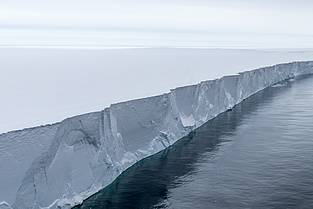SOURCE: Alfred Wegener Institute
DATE: June 1, 2017
SNIP: During the last glacial period – when the ice in the Antarctic was far thicker and extended further offshore than it does today – it has been speculated that subglacial lakes existed beneath it. An international team of researchers has now successfully sampled the metre-thick sediment layers left behind by these lakes contemporary on the seafloor.
Hundreds of subglacial lakes currently exist beneath the Antarctic Ice Sheet, with Lake Vostok being the largest and best known. The challenges involved in exploring these lake systems, which have remained enclosed for thousands of years, are enormous.
Satellite-monitoring shows that the movement of water from one lake to another can cause glaciers draining the Antarctic Ice Sheet to move more quickly. “This aspect needs to be taken into account in models designed to make predictions on the future behaviour and dynamics of ice masses, and with them, the degree to which the sea level will rise,” explains AWI marine geologist Kuhn. According to a second study, which Kuhn contributed to and was published in Nature Communications on 17 March 2017, he added: “We have every reason to believe that there are more subglacial lakes in the Antarctic – and more so in the last glacial period – than has been previously assumed. In addition, icecaps like those on the sub-Antarctic island South Georgia and ice sheets reacted much more sensitively and rapidly to climate changes than previously assumed.”

